Wekiwa Springs State Park
- January 5, 2024
- 0 comment
Located just 20 minutes north of Orlando, Wekiwa Springs State Park emerges as a natural sanctuary, spanning 7,000 acres of untamed beauty in Apopka, Florida. Renowned for its crystal-clear springs and lush tropical hammocks, this enchanting park offers a haven for those seeking refuge from the urban clamor. The centerpiece, Wekiwa Springs, invites visitors to immerse themselves in its cool, refreshing waters, making it a perfect escape on warm Florida days.
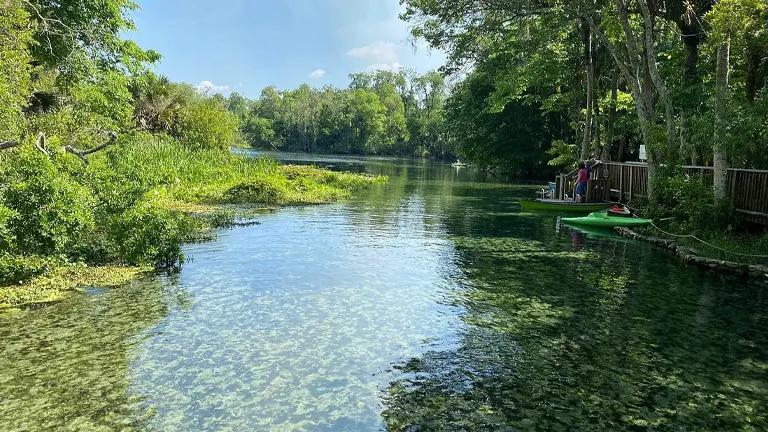
Beyond the pristine springs, a network of trails unfolds, crisscrossing through diverse landscapes, from sandhill uplands to dense hammocks, providing opportunities for hiking, biking, and horseback riding. As a living testament to Florida’s rich history, Wekiwa Springs State Park seamlessly blends recreational adventure with ecological preservation, offering a timeless retreat where visitors can reconnect with the natural wonders of the Sunshine State.
Characterizing Features of the Wekiwa Springs State Park
- Crystal-Clear Springs: Wekiwa Springs State Park is renowned for its crystal-clear springs, notably Wekiwa Springs, which gush forth approximately 42 million gallons of water daily into the Wekiva River. The clarity of these waters creates a captivating and refreshing oasis, making it a prime destination for swimming, snorkeling, and an overall immersive water experience.
- Diverse Ecosystems: Encompassing 7,000 acres, the park boasts a diverse range of ecosystems, from tropical hammocks to sandhill uplands. These varied landscapes contribute to the park’s unique charm, providing habitats for a rich array of wildlife. Visitors can explore miles of trails that wind through these ecosystems, offering a chance to witness the natural beauty and biodiversity of Central Florida.
- Recreational Opportunities: Wekiwa Springs State Park is a haven for outdoor enthusiasts, offering a plethora of recreational activities. From canoeing and kayaking along the Wekiva River to hiking on extensive trails that cater to different skill levels, the park provides an array of options for adventure seekers. Fishing, camping, and horseback riding further contribute to the diverse range of recreational experiences available.
- Historical Significance: With roots dating back to the mid-19th century, Wekiwa Springs has a rich historical legacy. The Apopka Sportsmen’s Club played a crucial role in preserving the land, eventually leading to its establishment as a state park in 1970. The park’s history, marked by efforts to conserve its natural beauty, adds depth to the visitor’s experience, creating a connection between the past and present.
- Abundant Wildlife: The park serves as a habitat for a wide range of wildlife, including coyotes, rabbits, deer, gray foxes, bobcats, raccoons, alligators, and black bears. The untouched Florida ecology around the springs provides a glimpse into the natural behavior of these animals, offering wildlife enthusiasts and nature lovers a chance to observe and appreciate the local fauna.
- Camping Facilities: Spread across the vast landscape, Wekiwa Springs State Park features well-equipped camping facilities catering to various preferences. From family camping to primitive options and cabin youth camping areas, the park provides opportunities for visitors to immerse themselves in the serene surroundings overnight. The presence of multiple camping options allows for a more personalized and immersive experience within the park.
- Educational Nature Center: Enhancing the visitor experience, the park features a nature center that serves as an educational hub. Open on weekends, the center provides insights into the local flora, fauna, and the ecological significance of the park. It adds an informative layer to the recreational aspect, making Wekiwa Springs State Park an engaging destination for both relaxation and learning.
- Wekiwa Springs State Park Nature Adventures: The park offers an additional layer of adventure through Wekiwa Springs State Park Nature Adventures. This program provides curated itineraries that enhance the existing opportunities within the park. Whether it’s canoeing, kayaking, bicycling, or simply relaxing by the spring, visitors can choose their own adventure and elevate their experience in this slice of Wild Florida.
In essence, Wekiwa Springs State Park stands as a multifaceted destination, where the crystalline springs, diverse ecosystems, recreational offerings, historical significance, wildlife, camping facilities, educational initiatives, and curated adventures converge to create an enriching and well-rounded experience for all who venture into its natural embrace.
History
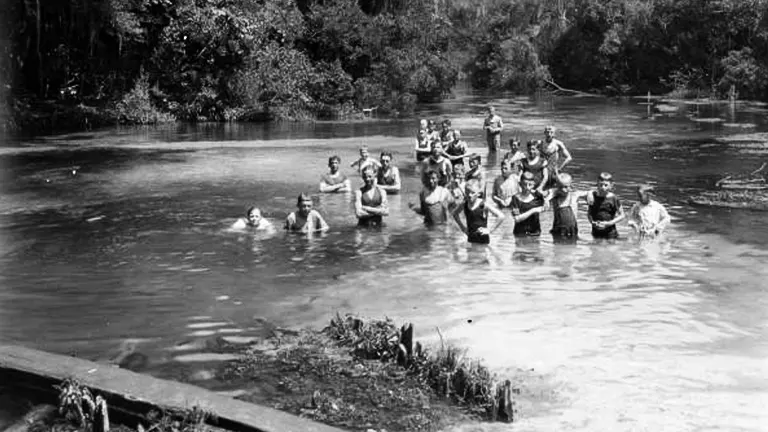
Wekiwa Springs State Park, steeped in a rich history, traces its roots back to the 1800s when Central Florida was primarily an agricultural region. As the Civil War concluded, Florida’s temperate winters and natural beauty attracted a burgeoning tourist trade. In 1941, the Apopka Sportsmen’s Club acquired the land from the Wilson Cypress Company, which had maintained a small turpentine camp in what would become the park. Mayor John H. Land of Apopka, co-owner of the Apopka Sportsmen’s Club, ardently lobbied the Florida State Legislature for three years to preserve the land. By 1969, the state expressed interest, leading to the establishment of Wekiwa Springs State Park in 1970. Since then, visitors have been drawn to the park’s natural springs, crystal-clear waters, and abundant wildlife. The Apopka Sportsmen’s Club’s foresight and advocacy, coupled with the enduring allure of Wekiwa Springs, have transformed this area into a timeless haven where visitors can connect with Florida’s history and revel in the state’s unspoiled natural beauty. Today, the park stands as a testament to the efforts undertaken to preserve and showcase the ecological wonders of the region.
Importance in Conservation and Recreation of Wekiwa Springs State Park
Wekiwa Springs State Park holds paramount importance in the realms of both conservation and recreation, standing as a testament to the delicate balance between preserving natural ecosystems and providing recreational havens. From a conservation perspective, the park serves as a sanctuary for diverse wildlife, offering habitats for species ranging from coyotes and deer to alligators and black bears. Its untouched Florida ecology, encompassing tropical hammocks and sandhill uplands, provides a crucial refuge for these creatures, contributing to regional biodiversity. The park’s pristine springs, feeding the Wekiva River, play a pivotal role in maintaining the ecological health of the area, showcasing the significance of Wekiwa Springs as a natural water source.

Simultaneously, the park has become a cherished destination for recreation enthusiasts, offering an array of activities such as swimming, canoeing, kayaking, hiking, and camping. Its historical roots and curated adventures through Wekiwa Springs State Park Nature Adventures add depth to the recreational experience. This dual role—serving as a haven for conservation and a playground for outdoor enthusiasts—underscores the park’s multifaceted significance in preserving Florida’s natural heritage while providing a space for the public to connect with and appreciate the wonders of the environment.
Unique Location of Wekiwa Springs State Park

Wekiwa Springs State Park, located just north of Orlando, boasts a distinctive position within the heart of Florida’s landscape. Situated off Interstate 4 at exit 94, near Altamonte Springs and Longwood, the park’s strategic location makes it a convenient retreat for both locals and tourists seeking an escape into unspoiled wilderness without venturing far from urban centers. Moreover, as the headwaters of the Wekiva River, the park contributes to the region’s intricate water network. This unique locale not only offers a serene haven away from urban life but also positions Wekiwa Springs State Park as a crucial piece in the conservation puzzle, ensuring the preservation of a distinctive Florida ecosystem while remaining a picturesque getaway for nature enthusiasts and day-trippers alike.
Diverse Vegetation and Plant Species in Wekiwa Springs State Park
- Live Oak (Quercus virginiana): Live oak trees are prominent in the tropical hammocks of Wekiwa Springs State Park, with their sprawling canopies providing shade and habitat for a variety of flora and fauna. These iconic trees, draped in Spanish moss, contribute to the picturesque landscapes of the hammock ecosystems.
- Longleaf Pine (Pinus palustris) and Slash Pine (Pinus elliottii): The sandhill uplands are characterized by the presence of longleaf and slash pine trees. These species are well-adapted to the well-drained sandy soils, and their presence shapes the unique flora of the sandhill ecosystem, including wiregrass and flowering plants like blazing star.
- Wiregrass (Aristida stricta): Wiregrass is a dominant groundcover in the pine flatwoods of the park. Its tufted grass blades play a crucial role in maintaining the fire-dependent nature of the ecosystem, promoting biodiversity and providing a habitat for small animals.
- Cypress (Taxodium): Cypress swamps within lower-lying areas feature cypress trees, adding a distinctive element to the park’s vegetation. These trees are well-adapted to wet conditions, and their knees, or pneumatophores, protrude from the water, aiding in oxygen exchange for the tree roots.
- Pickerelweed (Pontederia cordata): Along the spring runs and water bodies, pickerelweed thrives, displaying vibrant purple blooms. This aquatic plant not only adds aesthetic value to the landscape but also provides essential habitat and cover for aquatic organisms.
- Wekiva Basil (Clinopodium dentatum): An endemic plant, Wekiva basil, can be found in the park’s sandhill habitats. This aromatic herb is unique to the Wekiva River basin, and its presence highlights the park’s role in preserving and showcasing local plant diversity.
- Goldenrod (Solidago): Native wildflowers like goldenrod add seasonal splashes of color to the park’s landscape. These flowers not only attract pollinators but also contribute to the overall biodiversity of the park’s ecosystems.
- Saw Palmetto (Serenoa repens): Common in the sandhill uplands and pine flatwoods, saw palmetto is a hardy plant with fan-shaped leaves. It provides important cover for wildlife and plays a role in maintaining the ecological balance of these ecosystems.
- Eelgrass (Vallisneria americana): Submerged in the aquatic environments of the spring runs, eelgrass is a crucial component of the underwater vegetation. This submerged plant contributes to the clarity and health of the water, providing habitat for aquatic organisms.
- Air Plants (Tillandsia): Within cypress swamps and hammocks, air plants, or epiphytes, cling to tree branches. These unique plants derive nutrients and moisture from the air, showcasing the adaptability of flora within the diverse microhabitats of the park.
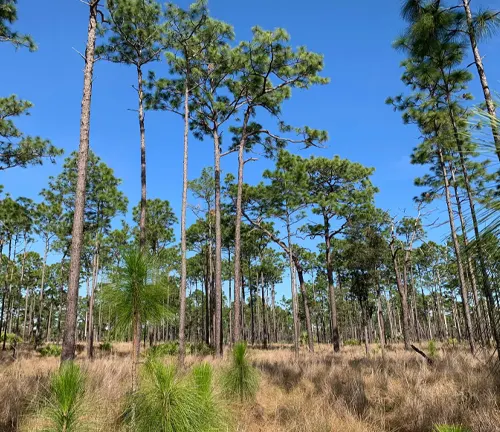

The intricate tapestry of plant species within Wekiwa Springs State Park reflects the ecological richness and biodiversity of its varied habitats, creating a captivating environment for both botanical enthusiasts and nature lovers alike.
Fauna
- White-Tailed Deer (Odocoileus virginianus): White-tailed deer are commonly spotted in Wekiwa Springs State Park, particularly in the sandhill uplands and pine flatwoods. Their presence contributes to the park’s diverse wildlife population, and visitors may catch glimpses of these graceful creatures while exploring the trails.
- Eastern Gray Squirrel (Sciurus carolinensis): The eastern gray squirrel is a familiar sight throughout the park, often seen darting through the trees or foraging on the forest floor. These arboreal mammals play a crucial role in the ecosystem by dispersing seeds, contributing to the regeneration of plant life.
- Bobcat (Lynx rufus): Bobcats, though elusive, inhabit the park’s diverse habitats, including the cypress swamps and hammocks. Their presence underscores the park’s importance as a habitat for apex predators, contributing to the ecological balance of the ecosystem.
- Wild Turkey (Meleagris gallopavo): Wild turkeys are residents of Wekiwa Springs State Park, particularly in the sandhill uplands and pine flatwoods. Their presence adds to the park’s avian diversity, offering birdwatchers the opportunity to observe these iconic fowl in a natural setting.
- Gopher Tortoise (Gopherus polyphemus): The sandy soils of the park’s sandhill uplands provide an ideal habitat for the gopher tortoise. These burrowing reptiles play a critical role in the ecosystem by creating shelters that are used by various species, contributing to the park’s overall biodiversity.
- Alligator (Alligator mississippiensis): Alligators are a charismatic feature of Wekiwa Springs State Park, particularly in the cypress swamps and water bodies. Visitors can observe these iconic reptiles basking in the sun or gliding through the water, showcasing the park’s role in preserving a healthy wetland ecosystem.
- Limpkin (Aramus guarauna): The Wekiva River is home to the distinctive limpkin, a wading bird known for its loud, haunting calls. These birds are often seen foraging for apple snails along the riverbanks, adding to the avian diversity of the park.
- Florida Black Bear (Ursus americanus floridanus): Wekiwa Springs State Park provides a habitat for the Florida black bear, an iconic and protected species in the state. The park’s extensive natural areas offer a refuge for these bears, emphasizing the importance of preserving large tracts of undeveloped land for wildlife conservation.
- Barred Owl (Strix varia): The haunting hoots of barred owls can be heard in the park’s hammocks and wooded areas. These nocturnal birds of prey contribute to the park’s diverse birdlife, showcasing the importance of the park as a haven for both diurnal and nocturnal species.
- Florida Scrub-Jay (Aphelocoma coerulescens): In the scrubby flatwoods and sandhill habitats, the Florida scrub-jay, a federally threatened species, finds a home. Wekiwa Springs State Park plays a crucial role in the conservation of this endemic bird, supporting efforts to preserve its specialized habitat.
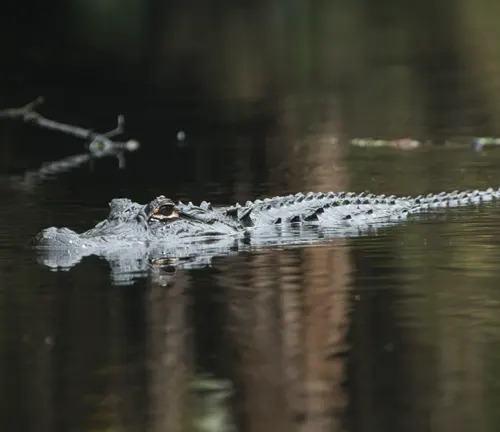
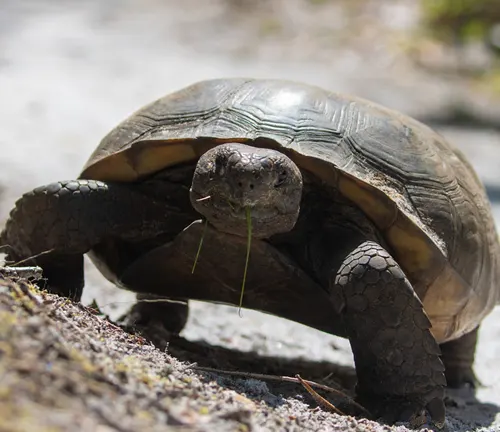
Wekiwa Springs State Park’s diverse fauna underscores its significance as a haven for wildlife, providing habitats for species ranging from iconic mammals and reptiles to unique and threatened avian species. Visitors can experience the richness of Florida’s wildlife in its natural setting, making the park a prime destination for nature enthusiasts and wildlife observers.
Attractions in Wekiwa Springs State Park
1. Wekiwa Springs
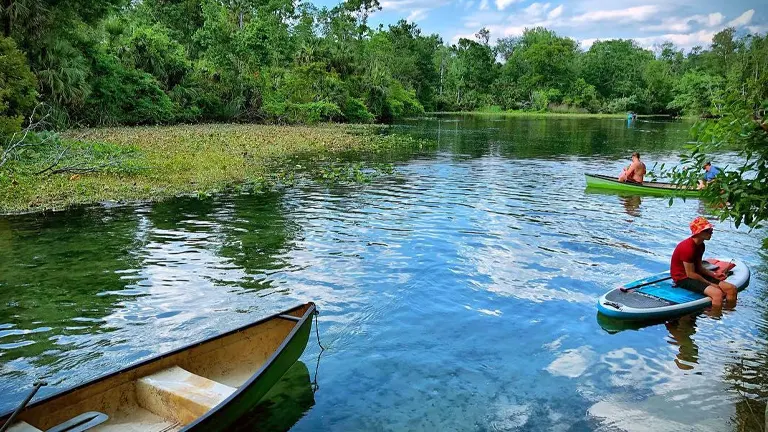
The heart of Wekiwa Springs State Park is undeniably Wekiwa Springs itself. Emerging from the depths, the crystal-clear waters of the spring invite visitors to a refreshing oasis. Surrounded by lush greenery, the springs provide an idyllic setting for swimming, snorkeling, and simply basking in the natural beauty that defines the park. The clear waters reveal a vibrant underwater world, making Wekiwa Springs a central attraction and a perfect starting point for exploring the diverse offerings of the park.
2. Wekiva River Canoe Launch

The Wekiva River, originating from Wekiwa Springs, serves as a scenic thoroughfare through the park’s varied landscapes. The canoe launch offers visitors the opportunity to embark on a tranquil paddle downstream. As paddlers navigate the meandering river, they encounter the serenity of cypress swamps, the beauty of tropical hammocks, and the captivating sights and sounds of Florida’s diverse ecosystems.
3. Sand Lake Trailhead
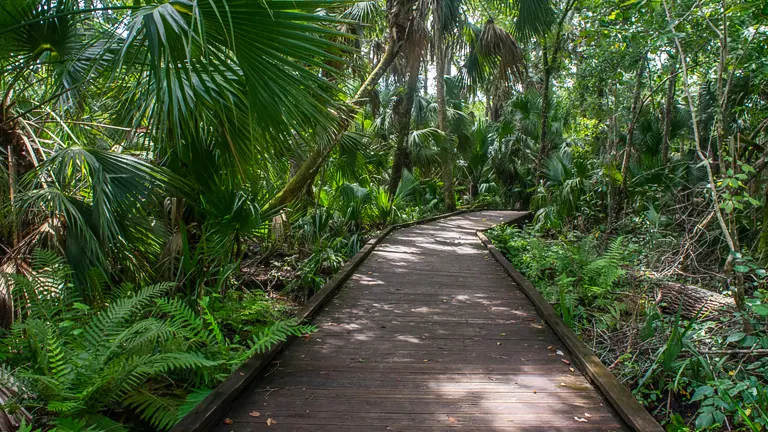
The Sand Lake Trailhead provides access to miles of hiking trails within Wekiwa Springs State Park. This trail system offers a journey through pine flatwoods, showcasing the unique vegetation adapted to the sandy soils. Hikers can explore the dynamic landscapes, from open canopies to shaded stretches, providing an immersive experience in the park’s ecological diversity.
4. Cypress Island

Nestled within the park, Cypress Island stands as a distinctive feature. Accessible by canoe or kayak, this area showcases the captivating beauty of cypress swamps. Towering cypress trees, draped in Spanish moss, create a picturesque scene, and paddlers can navigate through the waterways surrounded by the unique flora and fauna of this wetland ecosystem.
5. Kings Landing

Kings Landing, situated along the Wekiva River, offers a scenic spot for launching watercraft and enjoying riverside activities. This area serves as a gateway to the river, where visitors can embark on canoeing or kayaking adventures. The landing not only provides practical access but also sets the stage for a journey into the park’s natural wonders along the Wekiva River.
6. Nature Center

The Nature Center at Wekiwa Springs State Park serves as an educational hub, enriching the visitor experience. Open on weekends, the center features exhibits and interpretive programs that delve into the park’s flora, fauna, and conservation efforts. Knowledgeable staff further enhance the educational aspect, fostering an understanding and appreciation of the natural wonders within the park.
7. Sand Hill Nature Trail
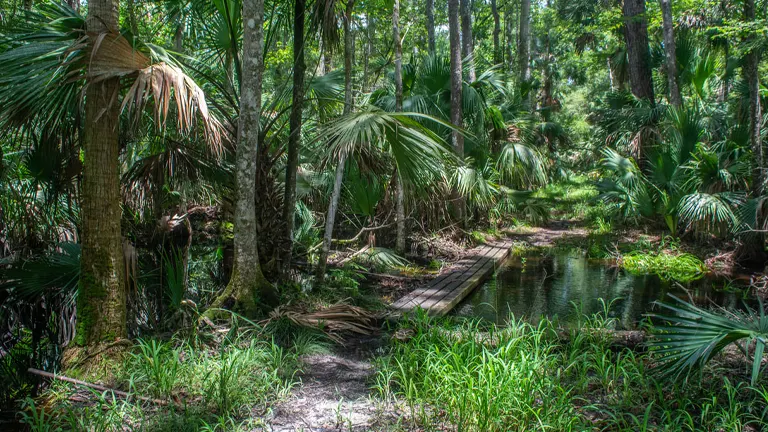
The Sand Hill Nature Trail offers a scenic hiking experience within the park. Meandering through the sandhill uplands, this trail introduces hikers to the unique vegetation adapted to well-drained sandy soils. From longleaf pines to wiregrass, the trail provides a glimpse into the specialized ecosystems within Wekiwa Springs State Park.
8. Wekiva Island
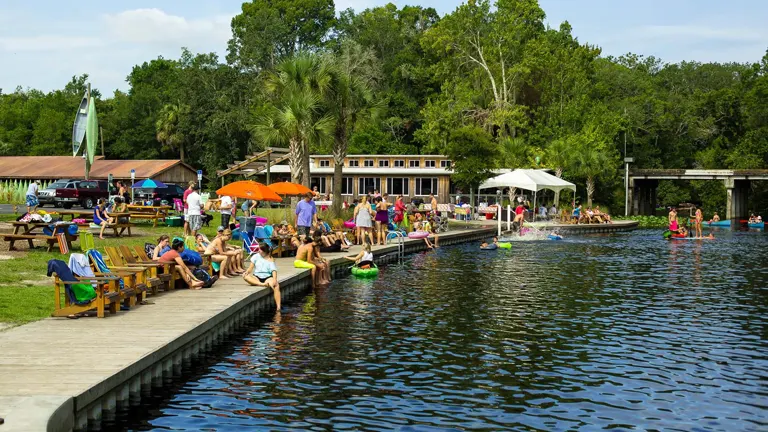
Adjacent to the park, Wekiva Island adds an extra dimension to the recreational offerings. With a focus on social enjoyment, Wekiva Island features food trucks, live music, and a riverside setting. The symbiotic relationship between Wekiwa Springs State Park and Wekiva Island creates a harmonious blend of natural beauty and leisure, offering visitors diverse ways to appreciate the surroundings.
Each attraction within Wekiwa Springs State Park contributes to the overall richness of the visitor experience, showcasing the park’s commitment to preserving Florida’s ecosystems while providing a diverse range of activities for nature enthusiasts and outdoor adventurers alike.
Recreational Activities in the Wekiwa Springs State Park
1. Swimming and Snorkeling
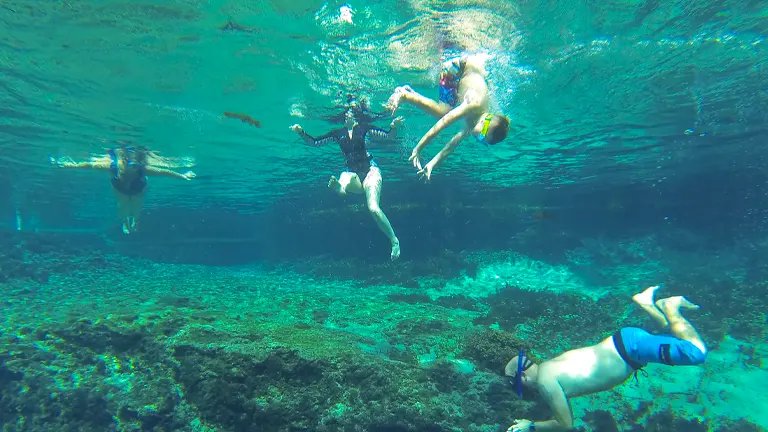
Wekiwa Springs State Park invites visitors to cool off in the crystalline waters of Wekiwa Springs. The constant flow of refreshing water makes it an ideal spot for a leisurely swim. The park’s designated swimming area not only provides a respite from the Florida heat but also allows snorkelers to explore the underwater world. With visibility extending to the sandy bottom, snorkeling in Wekiwa Springs unveils a diverse aquatic ecosystem, making it a popular and refreshing recreational activity.
2. Canoeing and Kayaking

The Wekiva River, fed by the springs, beckons outdoor enthusiasts for a scenic canoeing and kayaking adventure. Paddlers can embark on a journey downstream, winding through the lush landscapes of tropical hammocks and pine flatwoods. This water activity not only offers a peaceful and immersive experience but also provides opportunities for wildlife sightings. Alligators, turtles, and various bird species are among the inhabitants of the Wekiva River, creating a unique and memorable paddling experience.
3. Hiking Trails
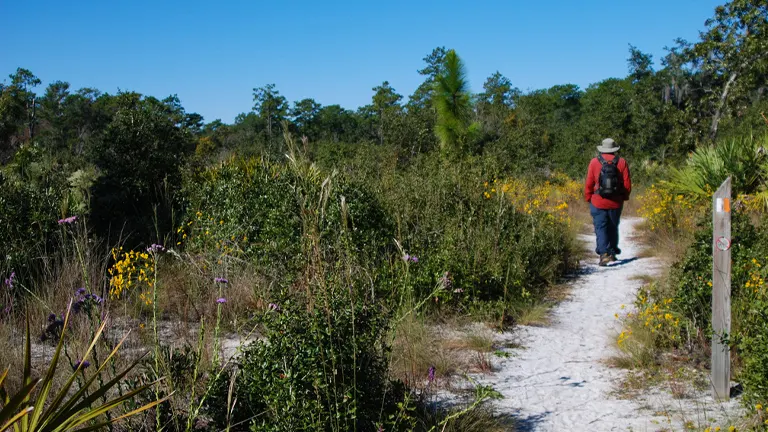
Wekiwa Springs State Park boasts an extensive network of hiking trails, catering to various skill levels and preferences. The trails meander through different ecosystems, offering hikers the chance to explore the park’s diverse landscapes. Whether tackling the 13.5-mile main hiking trail or opting for the 5.3-mile Volksmarch trail marked with orange diamonds, hikers can immerse themselves in Florida’s natural beauty while enjoying a range of trail options suitable for both casual strolls and more challenging hikes.
4. Fishing
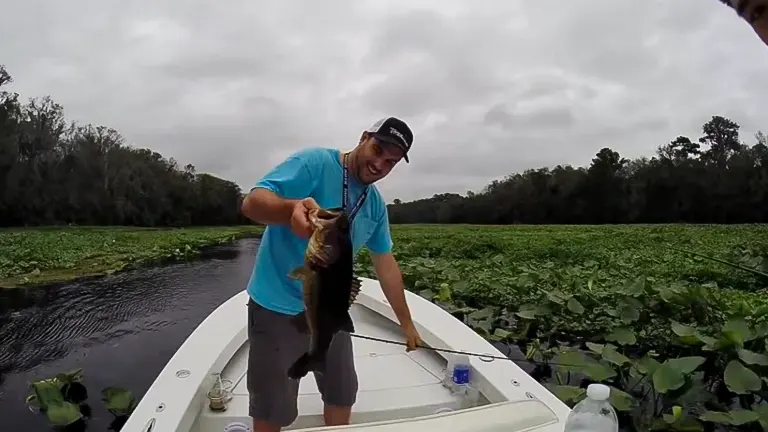
Fishing enthusiasts can cast their lines in designated areas along the Wekiva River within the park. The river is home to various fish species, providing anglers with a tranquil setting to enjoy their favorite pastime. Whether it’s catch-and-release or a leisurely afternoon by the riverbanks, fishing in Wekiwa Springs State Park adds a relaxing dimension to the recreational activities, allowing visitors to connect with nature while pursuing their hobby.
5. Camping
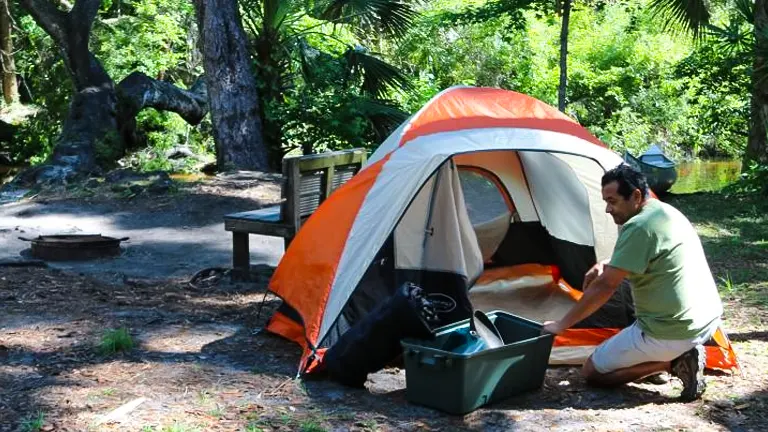
For those seeking an overnight adventure, Wekiwa Springs State Park offers camping facilities spread across its 7,000 acres. Family, primitive, and cabin youth camping areas provide options for various preferences. Camp Cozy, located 3.5 miles from the main spring, offers a primitive camping experience, allowing campers to immerse themselves in the natural surroundings and enjoy the serene ambiance of the park after sunset.
6. Bicycling
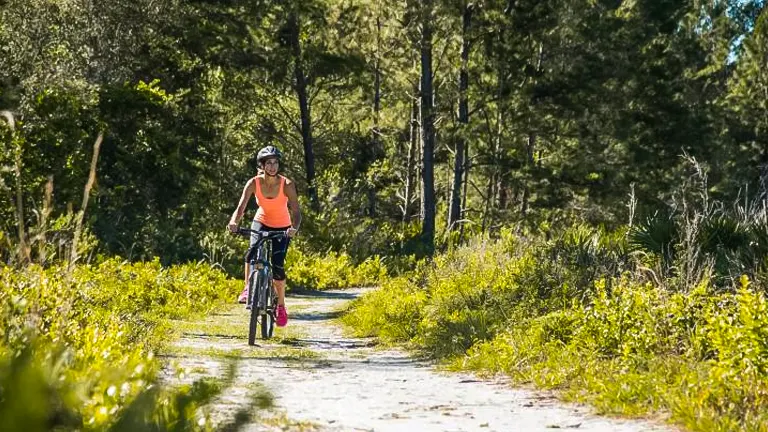
Cyclists can explore the park’s trails on two wheels, with designated areas for biking. The diverse landscapes, ranging from pine flatwoods to cypress swamps, offer a dynamic and scenic backdrop for biking enthusiasts. Whether it’s a leisurely ride with family or a more challenging off-road biking experience, Wekiwa Springs State Park provides a picturesque setting for cyclists to enjoy the outdoors and explore the park’s ecological diversity.
7. Wildlife Observation
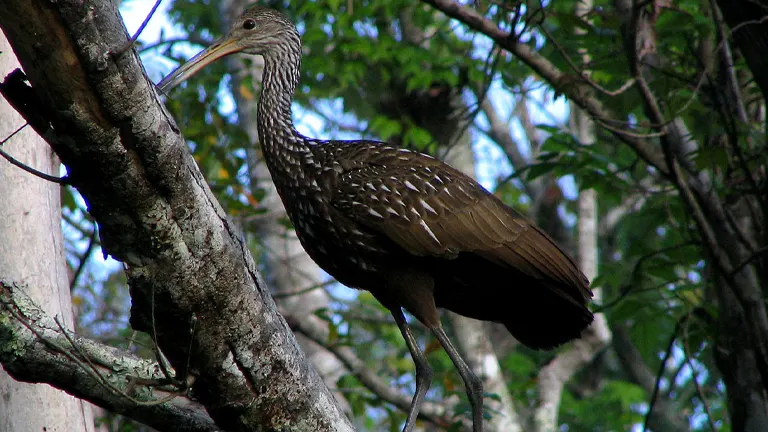
The park’s diverse ecosystems make it an excellent location for wildlife observation. Visitors equipped with binoculars and cameras can spot white-tailed deer, bobcats, wild turkeys, and a variety of bird species. The trails and waterways offer opportunities to observe the natural behaviors of the park’s resident fauna, making it a rewarding experience for wildlife enthusiasts and photographers alike.
8. Picnicking and Relaxation
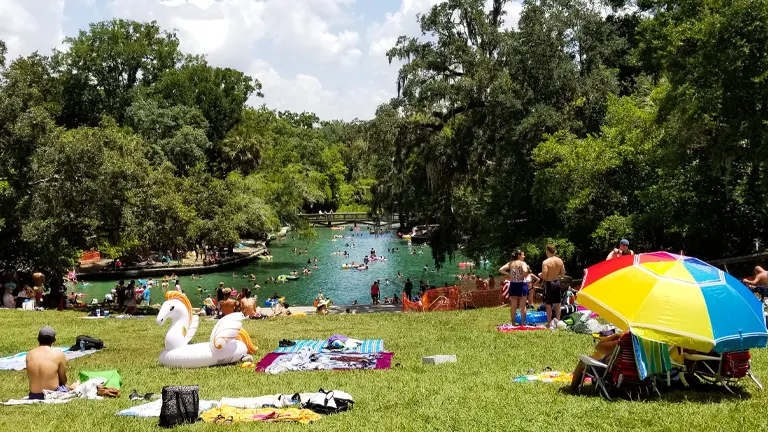
Wekiwa Springs State Park provides designated picnic areas where visitors can unwind and enjoy a meal surrounded by nature. Whether it’s a packed picnic with family and friends or a spontaneous outdoor lunch, these areas offer a tranquil setting for relaxation amid the scenic beauty of the park. Additionally, the presence of food trucks at Wekiva Island provides a convenient dining option for those looking to savor local culinary delights during their visit.
The diverse array of recreational activities in Wekiwa Springs State Park ensures that visitors can tailor their experience to their interests, whether seeking adventure on the water, exploring nature on foot or by bike, or simply enjoying a peaceful day in the heart of Florida’s natural landscapes.
Facilities and Amenities in Wekiwa Springs State Park
- Picnic Areas: Wekiwa Springs State Park offers well-maintained picnic areas, strategically placed to provide visitors with scenic spots to enjoy outdoor meals. Shaded by towering trees, these areas provide a comfortable setting for picnicking, encouraging families and groups to relax amidst the natural beauty of the park. Whether it’s a packed lunch or a spontaneous picnic, the designated areas enhance the overall recreational experience.
- Nature Center: The Nature Center stands as an educational focal point within Wekiwa Springs State Park. Open on weekends, it offers visitors insights into the park’s flora, fauna, and conservation efforts. The center features exhibits, interpretive programs, and knowledgeable staff who contribute to a deeper understanding of the park’s ecological significance. From interactive displays to guided programs, the Nature Center enriches the overall visit, making it both enjoyable and educational.
- Camping Facilities: Spread across the park’s expansive 7,000 acres, Wekiwa Springs State Park provides diverse camping facilities. From family camping areas to primitive sites and cabin youth camping, the park caters to various camping preferences. Notably, Camp Cozy, situated 3.5 miles from the main spring, offers a unique primitive camping experience accessible only by canoe or kayak. The camping facilities allow visitors to extend their stay, immersing themselves in the tranquility of the park’s natural surroundings.
- Canoe Rental at the Nature Center: Enhancing the water-based recreational activities, the Nature Center provides a convenient canoe rental service. Visitors can easily access canoes for paddling adventures along the Wekiva River, experiencing the park’s scenic landscapes from a unique perspective. The rental service ensures that both novice and experienced paddlers have the necessary equipment for a memorable water excursion.
- Trails for Bicycling, Hiking, and Horseback Riding: Wekiwa Springs State Park boasts an extensive network of trails catering to different activities. Whether visitors prefer hiking, biking, or horseback riding, the park offers diverse trail options. The Sand Lake Trailhead serves as a starting point for exploring miles of trails, allowing outdoor enthusiasts to traverse through various ecosystems, from sandhill uplands to cypress swamps, providing an opportunity to connect with nature in multiple ways.
- Wekiva Island Adjacency: Adjacent to the park, Wekiva Island complements the recreational offerings. Visitors can access Wekiva Island for additional amenities, including food trucks, live music, and riverside relaxation. The collaboration between Wekiwa Springs State Park and Wekiva Island creates a harmonious blend of natural beauty and social enjoyment, offering visitors diverse ways to appreciate the surroundings and extend their recreational experiences beyond the park boundaries.
- Fishing Spots along the Wekiva River: For fishing enthusiasts, Wekiwa Springs State Park provides designated spots along the Wekiva River. Anglers can enjoy a tranquil fishing experience while surrounded by the park’s natural beauty. The river, home to various fish species, offers a serene setting for those seeking a peaceful day of fishing. These designated areas ensure that fishing activities are integrated into the park’s recreational opportunities while respecting the conservation of the waterways.
- Visitor Center Information: The park’s Visitor Center serves as a hub of information, providing visitors with essential details about the park’s features, regulations, and upcoming events. Staffed by knowledgeable personnel, the center ensures that visitors have the resources they need for a seamless and enjoyable experience within Wekiwa Springs State Park. From trail maps to interpretive materials, the Visitor Center enhances the overall visit by providing valuable information and assistance.
Wekiwa Springs State Park’s facilities and amenities are designed to complement the natural attractions, creating a well-rounded and enjoyable experience for visitors. Whether picnicking under the shade, exploring trails, or accessing additional services from the Nature Center and beyond, the park ensures that visitors have the resources and conveniences to make the most of their time in this natural haven.
Tips for Visiting Wekiwa Springs State Park
- Arrive Early, Especially During Peak Seasons: To make the most of your visit to Wekiwa Springs State Park, consider arriving early, especially during peak seasons. The park’s popularity, particularly in the summer months, can result in reaching capacity, leading to temporary closures. Arriving early ensures you have ample time to enjoy the park’s recreational activities without the risk of disappointment due to capacity restrictions.
- Check the Park’s Capacity Status: Before heading to Wekiwa Springs State Park, it’s advisable to check the park’s capacity status, especially if you plan to visit during weekends or holidays. The park may close temporarily when it reaches capacity, so staying informed about current conditions will help you plan your visit effectively and avoid any potential closures.
- Pack Sunscreen and Bug Repellent: Florida’s sunny climate and abundant natural surroundings mean you should be prepared for sun exposure and potential encounters with insects. Pack sunscreen to protect yourself from the sun’s rays and bug repellent to ward off mosquitoes. This ensures a more comfortable outdoor experience, allowing you to focus on enjoying the park’s beauty without the distractions of sunburn or pesky bugs.
- Bring Water and Stay Hydrated: Exploring Wekiwa Springs State Park can be physically demanding, especially during warm weather. It’s essential to bring an ample supply of water to stay hydrated throughout your visit. Whether you’re hiking, paddling, or simply enjoying a picnic, having water readily available ensures you can fully immerse yourself in the recreational activities without the risk of dehydration.
- Respect Wildlife and Park Regulations: Wekiwa Springs State Park is home to diverse wildlife, and it’s crucial to respect the natural habitats and adhere to park regulations. Keep a safe distance from wildlife, refrain from feeding animals, and follow posted guidelines. Respecting the park’s rules ensures the preservation of its ecosystems and contributes to a positive and sustainable outdoor experience for both visitors and the local flora and fauna.
- Consider Weekday Visits for a Quieter Experience: For those seeking a quieter and more serene experience, consider planning your visit on weekdays. Weekends, especially in peak seasons, tend to draw larger crowds. Opting for a weekday visit increases the likelihood of finding more secluded spots along the trails or riverbanks, allowing you to appreciate the park’s tranquility to the fullest.
- Explore Beyond Wekiwa Springs: While the springs are a central attraction, Wekiwa Springs State Park offers diverse ecosystems and activities. Explore beyond the springs by hiking the various trails, paddling along the Wekiva River, or discovering unique areas like Cypress Island. This allows you to fully appreciate the park’s rich biodiversity and experience the full range of recreational opportunities it provides.
- Check for Special Events and Programs: Wekiwa Springs State Park regularly hosts special events, educational programs, and guided tours. Check the park’s website or inquire at the Visitor Center about any upcoming events during your visit. Participating in these programs can enhance your understanding of the park’s natural wonders and provide unique insights into its ecosystems and conservation efforts.
- Plan for Food Options: While there are picnic areas within the park, it’s advisable to plan for food options, especially if you intend to spend an entire day exploring. Consider bringing a packed lunch or snacks. Additionally, the proximity of Wekiva Island offers the convenience of food trucks, providing an alternative dining option during your visit.
- Embrace a Leave-No-Trace Mentality: Practicing a Leave-No-Trace mentality ensures that you leave the park in the same natural state you found it. Dispose of waste properly, stay on designated trails, and avoid picking plants or disturbing wildlife. This commitment to minimal impact helps preserve the park’s beauty for future visitors and contributes to the overall conservation efforts in Wekiwa Springs State Park.
By following these tips, you can make the most of your visit to Wekiwa Springs State Park, ensuring a memorable and enjoyable experience while respecting the natural environment and contributing to the park’s preservation efforts.
Recommendation
I strongly encourage exploring Wekiwa Springs State Park for a captivating blend of natural beauty and historical significance. This park, renowned for its diverse ecosystems, iconic landmarks, and various recreational activities, offers a unique and immersive experience. Engage in reflective outdoor activities such as hiking and wildlife observation while actively contributing to ongoing conservation efforts. The scenic trails, historical sites, and collaborative conservation initiatives establish Wekiwa Springs State Park as a pivotal destination for those seeking a harmonious fusion of nature and recreational exploration.
Conclusion
In conclusion, Wekiwa Springs State Park stands as a sanctuary of natural wonder just minutes away from the bustling energy of Orlando. With its crystal-clear springs, diverse ecosystems, and a plethora of recreational activities, the park offers a retreat into Florida’s pristine landscapes. From the serene waters of Wekiwa Springs to the meandering trails that lead through lush hammocks and uplands, every corner holds an opportunity for discovery and connection with nature. The park’s commitment to conservation, evident in its educational programs and preservation efforts, underscores its role not just as a recreational haven but as a guardian of Florida’s ecological heritage. Wekiwa Springs State Park invites visitors to immerse themselves in the beauty of the outdoors, fostering a sense of appreciation for the environment and leaving an indelible impression of the diverse and vibrant landscapes that make it a truly special destination.
FAQs
- Is Wekiwa Springs State Park suitable for families with young children?
Absolutely! Wekiwa Springs State Park is family-friendly, offering a range of activities suitable for all ages. The designated swimming area, picnic spots, and shorter hiking trails provide enjoyable options for families with young children. Always ensure supervision near water bodies for safety. - Are pets allowed in Wekiwa Springs State Park?
Yes, pets are welcome in designated areas of the park, but they must be kept on a leash at all times. The park encourages responsible pet ownership to ensure the safety of both visitors and wildlife. - Can I bring my own canoe or kayak to Wekiwa Springs State Park?
Certainly! Visitors are welcome to bring their own canoes or kayaks. The park also provides rental services for those who prefer to explore the waterways without bringing their own equipment. - Is camping allowed, and how do I secure a campsite at Wekiwa Springs State Park?
Yes, camping is allowed in the park. You can secure a campsite, including family, primitive, and cabin youth camping areas, by making reservations through the official Florida State Parks reservation system. Camp Cozy, accessible only by canoe or kayak, offers a unique primitive camping experience. - What wildlife can I expect to see in Wekiwa Springs State Park?
The park is home to a diverse array of wildlife, including white-tailed deer, bobcats, alligators, and numerous bird species. Wildlife observation is a popular activity, and visitors may spot these creatures along the trails and waterways. - Are there any special events or programs offered at Wekiwa Springs State Park?
Yes, the park regularly hosts special events, educational programs, and guided tours. Check the park’s website or inquire at the Visitor Center for information on upcoming events during your visit. - Can I go fishing in Wekiwa Springs State Park, and what kind of fish can I catch?
Fishing is permitted in designated areas along the Wekiva River. Commonly caught fish include bass, catfish, and sunfish. Make sure to adhere to fishing regulations and guidelines set by the park. - What is the best time to visit Wekiwa Springs State Park to avoid crowds?
Weekdays, especially during non-peak seasons, tend to be quieter, offering a more serene experience. Arriving early is also advisable, particularly on weekends or holidays, as the park may reach capacity during peak hours.
In wrapping up our exploration of Wekiwa Springs State Park, it’s clear that this natural retreat offers a refreshing break from the daily grind. From crystal-clear springs to winding trails, the park provides a simple yet enriching experience for all. Whether you’re a local seeking a quick getaway or a visitor looking for a taste of Florida’s outdoors, Wekiwa Springs State Park stands as a welcoming haven. So, next time you crave a bit of nature’s charm, consider this unassuming yet beautiful spot just north of Orlando.


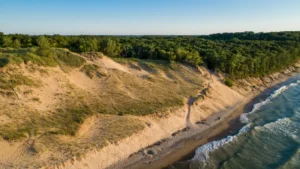
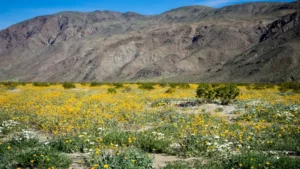

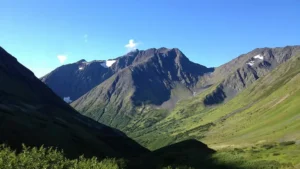

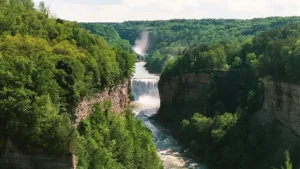
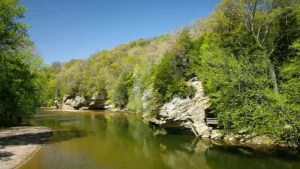

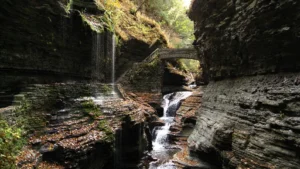
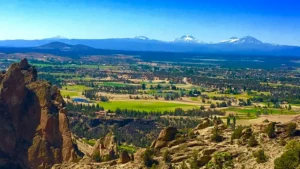

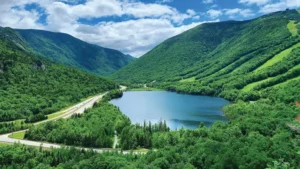
Leave your comment